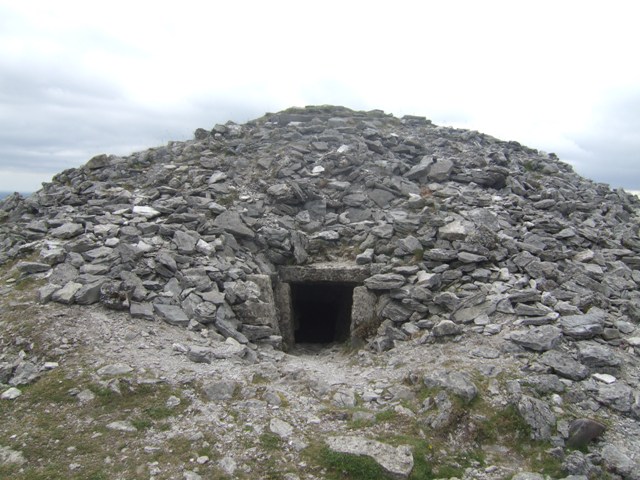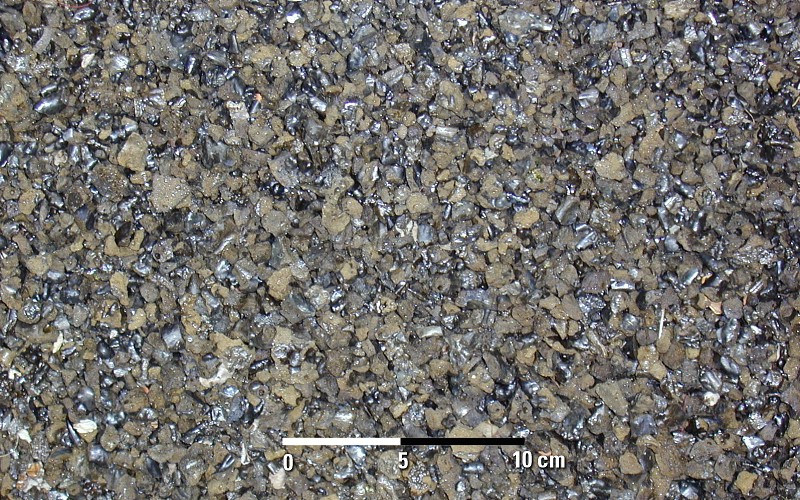|
Heron Pike
Heron Pike is a fell in the English Lake District, two kilometres east of Grasmere. It is part of the Fairfield group in the Eastern Fells. It should not be confused with the Heron Pike that forms part of Sheffield Pike, although it appears that, by coincidence, both Heron Pikes are exactly the same height. Topography Not a fell of great significance, Heron Pike is a slight grassy rise on the long southern ridge of its parent fell Fairfield. Just cresting the 2,000 foot mark at , it is mostly climbed as part of the Fairfield horseshoe walk and it lies between the adjoining fells of Nab Scar and Great Rigg. Heron Pike’s eastern side features Erne Crag and Blind Cove as it falls away quite steeply towards Rydal Beck. At the base of Erne Crag is an old quarry, the mouth of a cavern quite easy to locate.Richards, Mark: ''Near Eastern Fells'': Collins (2003): The fell's western flank drops towards Grasmere and has the small Alcock Tarn on its lower slopes at a height of ... [...More Info...] [...Related Items...] OR: [Wikipedia] [Google] [Baidu] |
Great Rigg
Great Rigg is a fell in the English Lake District, north-west of Ambleside and reaching a height of . It is most often climbed as part of the Fairfield horseshoe, a 16-km circular walk which starts and finishes in Ambleside. The fell's name originates from the Old English "Rigg", meaning a bumpy or knobbly ridge. Topography Great Rigg is mostly without merit, being just an undulation on one of Fairfield's southern ridges; with of prominence it just qualifies as a Hewitt. It is best seen from the south-west near Grasmere where from that angle its summit seems to dominate the valley. The fell is rocky on its eastern side as Stone Cove drops to Rydal Beck; on its western flank it is mostly grassy as it falls away to Tongue Gill; to the north and south are ridges which continue to other fells, with Fairfield being away to the north while Heron Pike lies to the south. There is a third less significant ridge going south-west towards Grasmere which has the ‘Wainwright’ fell ... [...More Info...] [...Related Items...] OR: [Wikipedia] [Google] [Baidu] |
List Of Nuttalls In England
This is a list of Nuttall mountains by height. Nuttalls are defined as peaks in England and Wales above in height, the general requirement to be called a "mountain" in the British Isles, and with a prominence above ; a mix of imperial and metric thresholds. The Nuttall classification was suggested by Anne and John Nuttall in their 1990 two–volume book, "The Mountains of England and Wales". The list was updated with subsequent revised editions by the Nuttalls. Because of the prominence threshold of only , the list is subject to ongoing revisions. In response, Alan Dawson introduced the Hewitts, with a higher prominence threshold of . This was the prominence threshold that the UIAA set down in 1994 for an "independent" peak. In 2010, Dawson replaced his Hewitts with the fully "metric" Simms, consisting of a height threshold of , and a prominence threshold of . However, both the Nuttall and Hewitt classifications have become popular with peak baggers, and both remain in ... [...More Info...] [...Related Items...] OR: [Wikipedia] [Google] [Baidu] |
Fells Of The Lake District
A fell (from Old Norse ''fell'', ''fjall'', "mountain"Falk and Torp (2006:161).) is a high and barren landscape feature, such as a mountain or moor-covered hill. The term is most often employed in Fennoscandia, Iceland, the Isle of Man, parts of northern England, and Scotland. Etymology The English word "fell" comes from Old Norse ''fell'' and ''fjall'' (both forms existed). It is cognate with Danish ''fjeld'', Faroese ''fjall'' and ''fjøll'', Icelandic ''fjall'' and ''fell'', Norwegian ''fjell'' with dialects ''fjøll'', ''fjødd'', ''fjedd'', ''fjedl'', ''fjill'', ''fil(l)'', and ''fel'', and Swedish ''fjäll'', all referring to mountains rising above the alpine tree line.Bjorvand and Lindeman (2007:270–271). British Isles In northern England, especially in the Lake District and in the Pennine Dales, the word "fell" originally referred to an area of uncultivated high ground used as common grazing usually on common land and above the timberline. Today, gen ... [...More Info...] [...Related Items...] OR: [Wikipedia] [Google] [Baidu] |
Nuttalls
Nuttall may refer to: People * Nuttall (name) * Nuttall baronets Nature * Nuttall's oak, a fast-growing large deciduous oak tree native to North America * Nuttall's woodpecker, a species of woodpecker found in oak woodlands of California * Nuttall sandstone, a very hard type of sandstone; see New River Gorge National River * Nuttall's toothwort, a species of cardamine flower. Places * Nuttall, Virginia, United States * Nuttall railway station, Nuttall village, Nasirabad, Balochistan, Pakistan * Nuttall mountains, hills that are over with a prominence above : ** List of Nuttall mountains in England ** List of Nuttall mountains in Wales Other uses * BAM Nuttall, a British construction company * Blackman–Nuttall window, a mathematical function used in signal processing—see Window function * Codex Zouche-Nuttall The Codex Zouche-Nuttall or Codex Tonindeye is an accordion-folded pre-Columbian document of Mixtec pictography, now in the collections of the British M ... [...More Info...] [...Related Items...] OR: [Wikipedia] [Google] [Baidu] |
Cairn
A cairn is a human-made pile (or stack) of stones raised for a purpose, usually as a marker or as a burial mound. The word ''cairn'' comes from the (plural ). Cairns have been and are used for a broad variety of purposes. In prehistory, they were raised as markers, as memorials and as burial monuments (some of which Chambered cairn, contained chambers). In the modern era, cairns are often raised as landmarks, especially to mark the summits of mountains, and as Trail blazing, trail markers. They vary in size from small piles of stones to entire artificial hills, and in complexity from loose conical rock piles to elaborate megalithic structures. Cairns may be painted or otherwise decorated, whether for increased visibility or for religious reasons. History Europe The building of cairns for various purposes goes back into prehistory in Eurasia, ranging in size from small rock sculptures to substantial human-made hills of stone (some built on top of larger, natural hills). ... [...More Info...] [...Related Items...] OR: [Wikipedia] [Google] [Baidu] |
Central Fells
The Central Fells are a part of the Cumbrian Mountains in the Lake District of England. Reaching their highest point at High Raise (2,500 ft or 762 metres), they occupy a broad area to the east of Borrowdale. The Central Fells are generally lower than the surrounding hills, the Lake District's dome-like structure having a slight dip in the middle. The range extends from the boggy ridge between Derwentwater and Thirlmere in the north, to the rock peaks of the Langdale Pikes in the south. Partition of the Lakeland fells The Lake District is a National Park in the north-west of the country which, in addition to its lakes, contains a complex range of hills. These are locally known as fells and range from low hills to the highest ground in England. Hundreds of tops exist and many writers have attempted to draw up definitive lists. In doing so the compilers frequently divide the range into smaller areas to aid their description. The most influential of all such authors wa ... [...More Info...] [...Related Items...] OR: [Wikipedia] [Google] [Baidu] |
Furness Fells
The Furness Fells (archaic: Fournisfels) are a multitude of hills and mountains in the Furness region of Cumbria, England. Historically part of Lancashire, the Furness Fells or High Furness is the name given to the upland part of Furness, that is, that part of Furness lying north of the line between Ulverston and Ireleth. The hills lie largely within the English Lake District. The term ''Furness Fells'' is also sometimes used as a synonym with ''Coniston Fells'', perhaps partly as a result of the placing of the words "Furness Fells" on some Ordnance Survey 1:250 000 maps. The Coniston Fells properly form only part of the Furness Fells, albeit with all the highest mountains; other fells in Furness are of lower altitude. The Coniston Fells form part of the Southern Fells of the Lake District as defined by Alfred Wainwright. Coniston Fells The Coniston Fells are separated from the Scafell and Bowfell massif to their north by Wrynose Pass, and are surrounded on all other sid ... [...More Info...] [...Related Items...] OR: [Wikipedia] [Google] [Baidu] |
Windermere
Windermere (historically Winder Mere) is a ribbon lake in Cumbria, England, and part of the Lake District. It is the largest lake in England by length, area, and volume, but considerably smaller than the List of lakes and lochs of the United Kingdom, largest Scottish lochs and Northern Irish loughs. The lake is about in length and at its widest, has a maximum depth of , and has an elevation of above sea level. Its outflow is the River Leven, Cumbria, River Leven, which drains into Morecambe Bay. The lake is in the administrative council area of Westmorland and Furness and the historic county of Westmorland, with the lake forming part of the boundary between the historic counties of Westmorland and Lancashire. It has been one of the country's most popular places for holidays and summer homes since the arrival of the Kendal and Windermere Railway's branch line in 1847. The Freshwater Biological Association was established on the shore of Windermere in 1929 and much of the early ... [...More Info...] [...Related Items...] OR: [Wikipedia] [Google] [Baidu] |
British Geological Survey
The British Geological Survey (BGS) is a partly publicly funded body which aims to advance Earth science, geoscientific knowledge of the United Kingdom landmass and its continental shelf by means of systematic surveying, monitoring and research. The BGS headquarters are in Keyworth, Nottinghamshire, England. Its other centres are located in Edinburgh, Wallingford, Oxfordshire, Wallingford, Cardiff and London. The current tagline of the BGS is: ''Understanding our Earth''. History and previous names The Geological Survey was founded in 1835 by the Board of Ordnance as the Geological Survey of Great Britain, under Directors of the British Geological Survey, directorship of Henry De la Beche. This was the world's first national Geological Survey, geological survey. It remained a branch of the Ordnance Survey for many years. In 1965, it was merged with the Geological Museum and Overseas Geological Surveys, under the name of Institute of Geological Sciences. In 1969, Beris Cox was ... [...More Info...] [...Related Items...] OR: [Wikipedia] [Google] [Baidu] |
Lapilli Tuff
Lapilli (: lapillus) is a size classification of tephra, which is material that falls out of the air during a volcanic eruption or during some meteorite impacts. ''Lapilli'' is Latin for "little stones". By definition lapilli range from in diameter. A pyroclastic particle greater than 64 mm in diameter is known as a volcanic bomb when molten, or a volcanic block when solid. Pyroclastic material with particles less than 2 mm in diameter is referred to as volcanic ash. Formation Lapilli are spheroid-, teardrop-, dumbbell- or button-shaped droplets of molten or semi-molten lava ejected from a volcanic eruption that fall to earth while still at least partially molten. These granules are the direct result of liquid rock cooling as it travels through the air. Lapilli tuffs are a very common form of volcanic rock typical of rhyolite, andesite and dacite pyroclastic eruptions, where thick layers of lapilli can be deposited during a basal surge eruption. Most lapilli tuffs ... [...More Info...] [...Related Items...] OR: [Wikipedia] [Google] [Baidu] |
Dacite
Dacite () is a volcanic rock formed by rapid solidification of lava that is high in silica and low in alkali metal oxides. It has a fine-grained (aphanitic) to porphyritic texture and is intermediate in composition between andesite and rhyolite. It is composed predominantly of plagioclase feldspar and quartz. Dacite is relatively common, occurring in many tectonic settings. It is associated with andesite and rhyolite as part of the subalkaline tholeiitic and calc-alkaline magma series. Etymology The word ''dacite'' comes from Dacia, a province of the Roman Empire which lay between the Danube River and Carpathian Mountains (now modern Romania and Moldova) where the rock was first described. The term ''dacite'' was used for the first time in the scientific literature in the book ''Geologie Siebenbürgens'' (''The Geology of Transylvania'') by Austrian geologists Franz Ritter von Hauer and Guido Stache. Dacite was originally defined as a new rock type to separate calc-alkaline ... [...More Info...] [...Related Items...] OR: [Wikipedia] [Google] [Baidu] |
Hewitt (hill)
This is a list of Hewitt mountains in England, Wales and Ireland by height. Hewitts are defined as "Hills in England, Wales and Ireland over two thousand" feet in height, the general requirement to be called a "mountain" in the British Isles, and with a prominence above ; a mix of imperial and metric thresholds. The Hewitt classification was suggested by Alan Dawson in his 1992 book, "The Relative Hills of Britain". Dawson originally called his Hewitts "Sweats", from "Summits – Wales and England Above Two thousand", before settling on the label Hewitt. In a series of three booklets edited by Dave Hewitt, the list of English Hewitts was published in 1997, and the list of Welsh Hewitts was also published in 1997, and the list of Irish Hewitts was published in 1998. Hewitts were designed to address one of the criticisms of the 1990 Nuttall classification, by requiring hills to have a relative height of , a threshold that the UIAA had set down in 1994 for an "ind ... [...More Info...] [...Related Items...] OR: [Wikipedia] [Google] [Baidu] |




